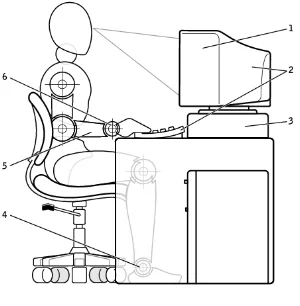Lie on your back with your knees bent, and the soles of your feet on the floor.
Place one hand behind your head, and the other hand on your abdomen, with your fingertips across your midline, at the level of your belly button.
With your abdominal wall relaxed, gently press your fingertips into your abdomen.
Roll your upper body off the floor into a “crunch”.
Move your fingertips back and forth across your midline, feeling for the right and left sides of your rectus abdominis muscle. Test for separation at, above, and below your belly button.
Normal = 1 finger space separation or less.
*Diastasis recti = a separation or gap between the rectus abdominis muscles of 2 or more finger spaces or a distance of 25 mm (just less than 1 inch). This means the tissues joining the rectus abdominis muscles have either stretched or split apart.
COMMON MYTHS about Diastasis Recti During and After Pregnancy:
All women should wait for at least six weeks after delivery before beginning any abdominal exercises or postnatal reconditioning program.
Diastasis recti/abdominal separation requires surgical repair.
Diastasis recti/abdominal separation causes permanent bulging of the abdomen or permanent damage to the abdominals.
Diastasis recti causes pain.
Dos and Don'ts
Don't strain. It can make matters worse. Constipation and lifting heavy things, including your kids, strain that connective tissue. Standing up and sitting down also count as heavy lifting in this case, because you’re lifting your body weight.
You push down when giving birth, but if done wrong, this action puts big pressure on the weak belly tissue.
Exercise. Some routine fitness moves, including crunches, sit-ups, pushups, press-ups, and front planks, make abdominal separation worse. So can swimming, some yoga poses (like downward dog), and doing anything on your hands and knees. Once the area has healed you may be able to resume your normal exercise routine.
Allow the belly to heal. Physical therapists don’t have one standard guideline on what moves will bring the belly muscles back into line. Some research found success with the Tupler technique. It involves certain exercises done while wearing a belly splint, which protects and holds the ab muscles together.
The best time to begin core strengthening is before you get pregnant, if you don’t already have an abdominal separation.
Before starting any exercises during or after pregnancy, be sure to ask your doctor what's OK for you to do and what's off-limits for now.
Treatment
If your abdominal separation is not too big, you may decide to live with it. Although, I would not advice it. Especially if you are planning another pregnancy. Weakness in the abdominal wall can preclude many other symptoms listed above. Keep in mind how much you are going to use your abdominals in the coming months and years with a growing baby. The vast majority of women can close their mid lines and flatten their abdominal walls with the proper rehabilitation exercises. The abdominal wall can get as strong, or even stronger, after diastasis recti rehab.
Your doctor or Physical Therapist can measure how far apart your muscles are using finger widths, a measuring tape or instrument, or ultrasound. Then she can see whether it's getting better or worse. You can also do the self test mentioned at the top of this page.
In-office and virtual appointments available for DIASTASIS program. (Proper respirator masks must be worn for in-office appointments for the entire session during the pandemic).



































